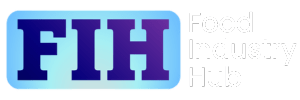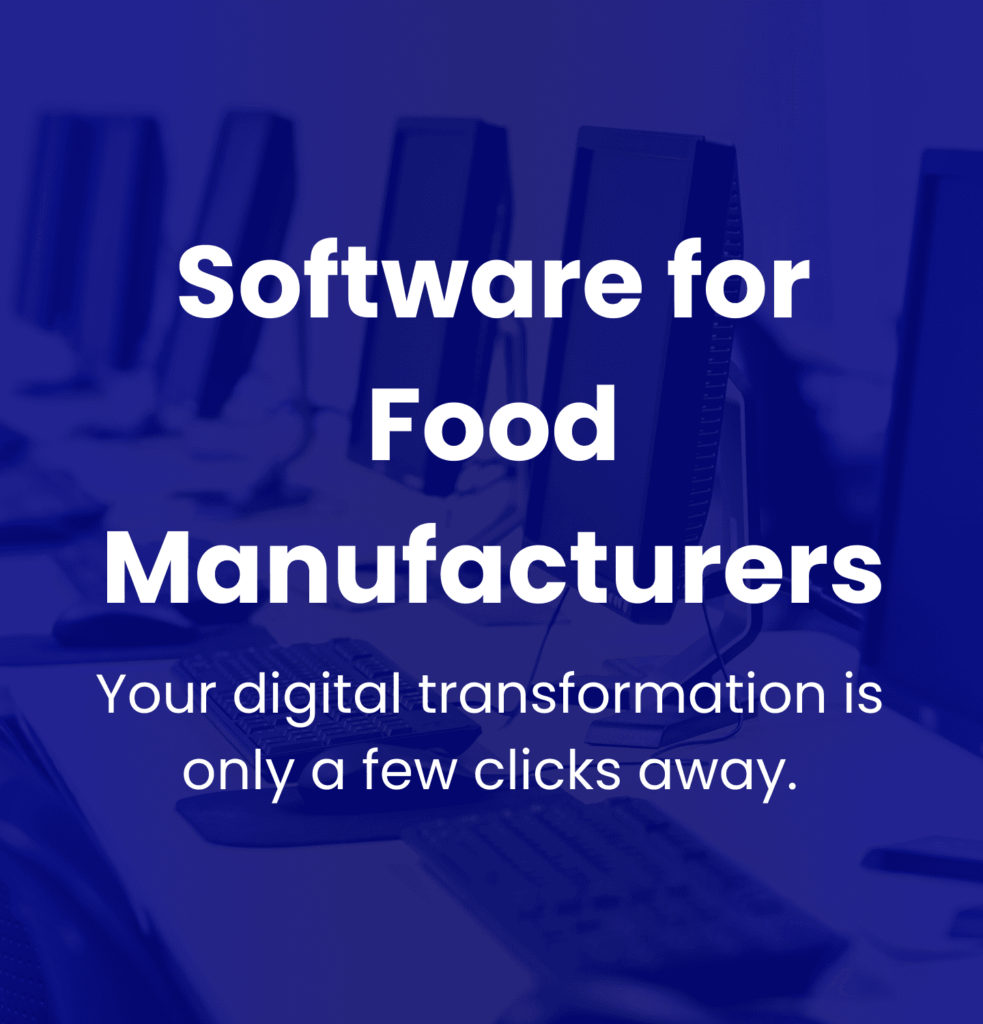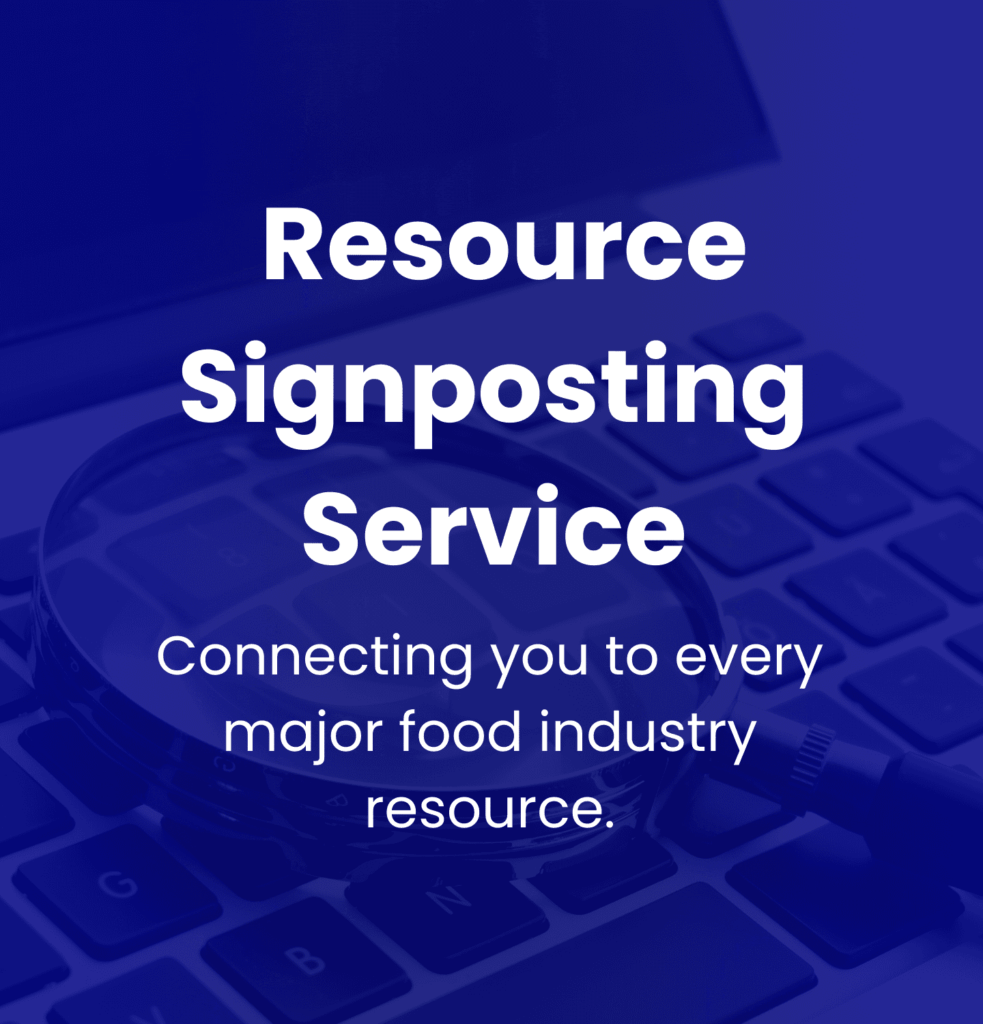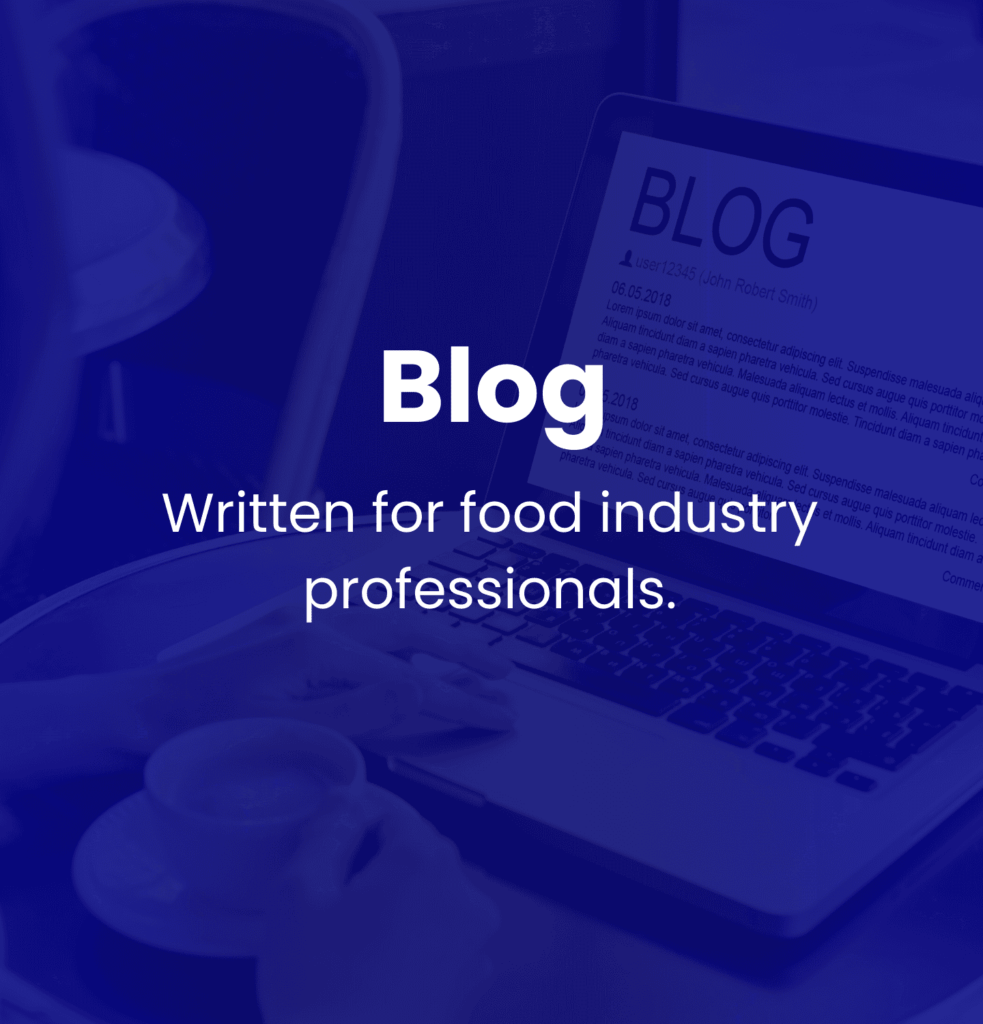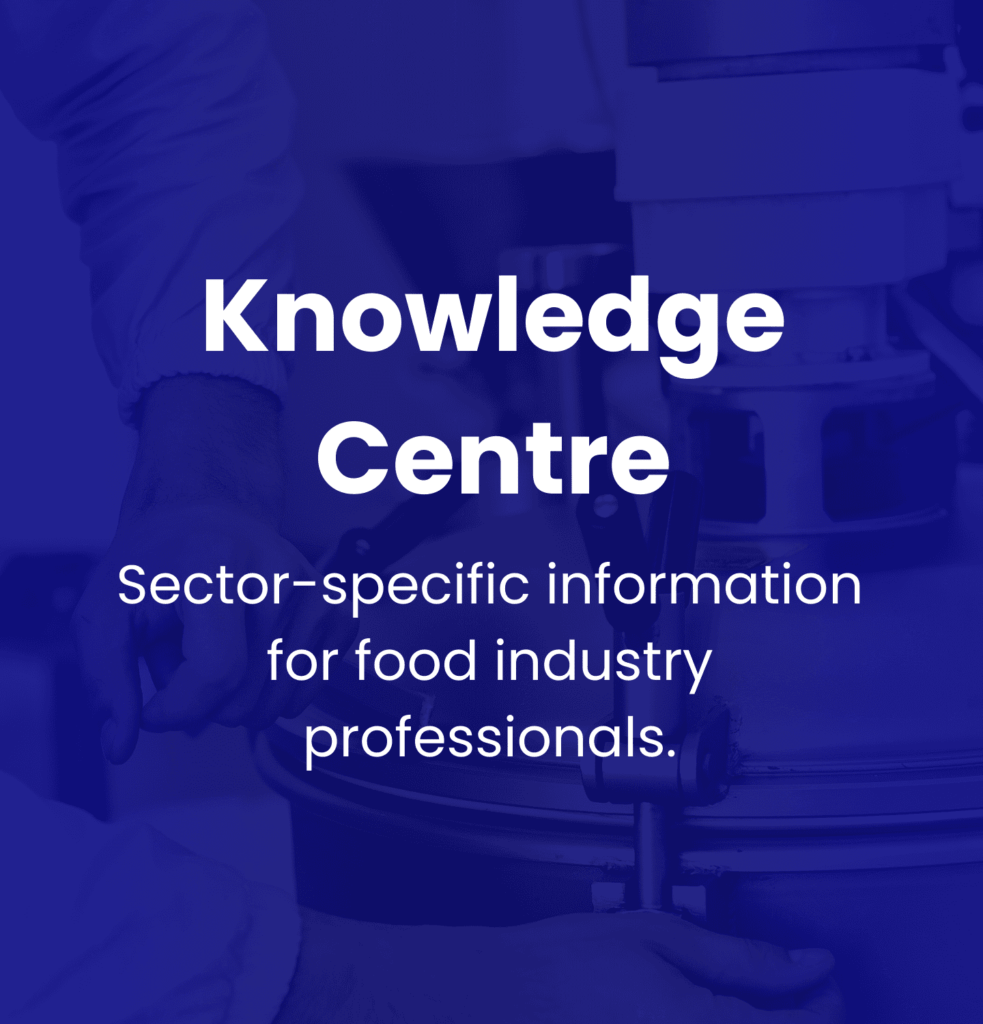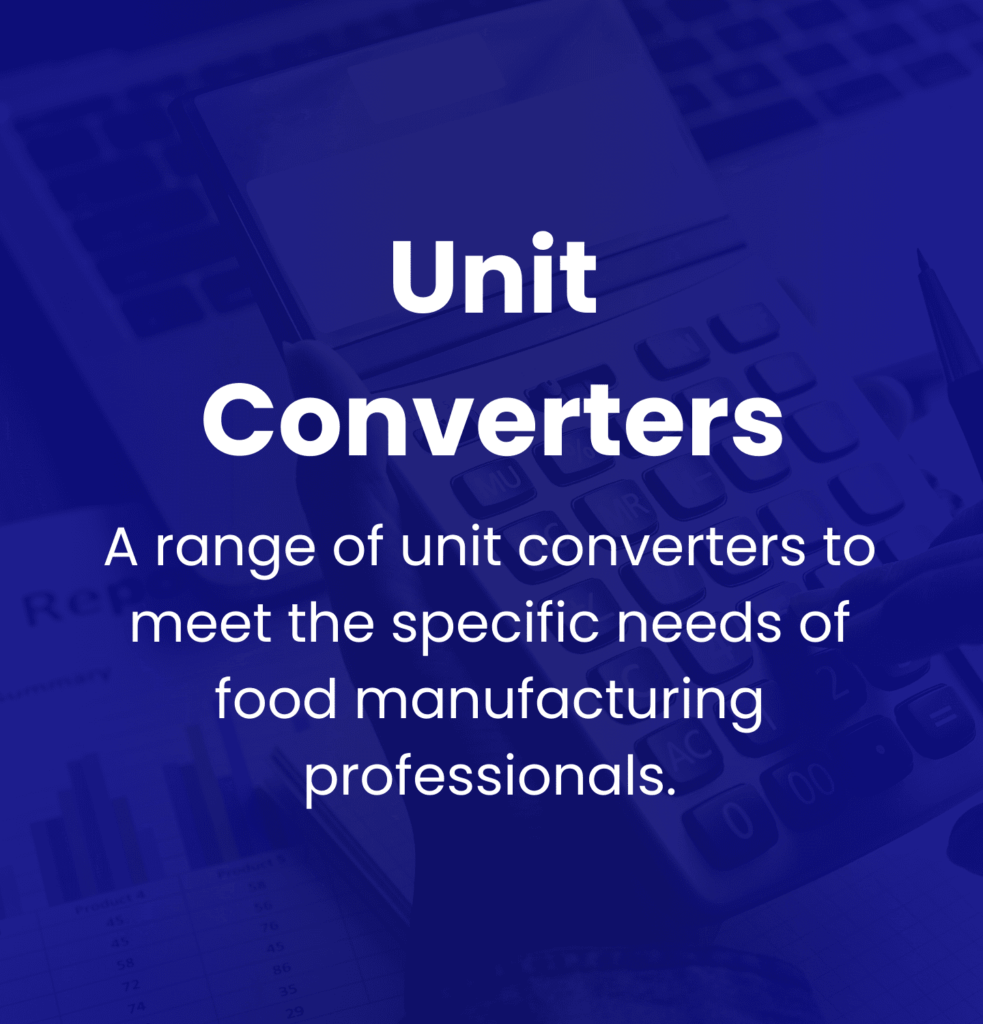Know: Analytical Testing
Introduction
Analytical testing forms an integral part of the food manufacturing process by applying scientific methods to assess food products, ingredients and manufacturing procedures. This comprehensive assessment ensures food safety, quality, and regulatory standards are met. Technical testing techniques such as chemical, microbiological, and sensory analyses provide valuable information about food products—especially on important parameters like nutrient composition, potential contaminants, and sensory characteristics.
Primarily, analytical testing underpins the efforts of food quality and safety assurance. It is a key tool to validate that raw materials and end products align with pre-set specifications. Analytical testing plays an essential role in the identification and quantification of harmful substances, for instance, pathogens and chemical residues, thereby mitigating the risk of foodborne illnesses. It also aids in monitoring regulatory compliance, assuring food products meet the requirements set by governing bodies like the European Food Safety Authority (EFSA) and the Food Safety and Standards Authority of India (FSSAI).
The foundation of analytical testing lies in several key elements, including the measurement of nutrient profiles, detection of contaminants, examination of physical properties, and sensory evaluations. Gaining a solid grasp of these core elements allows manufacturers to navigate the intricacies of regulatory requirements, thus preserving consumer confidence.
The rest of this article will shed light on several significant areas, including the key principles of analytical testing, adherence to regulatory frameworks, a diverse suite of testing techniques, the adoption of novel technologies, strategic implementation methods, and global considerations. As the landscape of the food manufacturing industry is continually adapting, the use of innovative testing methods ensures not only the safety and quality of food products but also upholds legal compliance and authenticity in a multifaceted global market.
Key Takeaways
Analytical testing plays a foundational role in the food industry, tasked with ensuring the safety, quality, and nutritional integrity of food products. Central to its operation, analytical testing identifies potential hazards – ranging from microbiological pathogens to chemical contaminants – thereby, playing a significant role in the safeguarding of public health. As food supply chains continue to grow in complexity, the reliability of testing becomes increasingly pivotal. Emergent methodologies such as real-time PCR and liquid chromatography equip manufacturers with the abilities to detect contaminants with heightened sensitivity, thereby effectively tackling modern food safety challenges.
Regulatory Compliance and Analytical Testing
Beyond its essential role in public health protection, adhering to regulatory mandates also influences the success of analytical testing. Regulatory bodies, including the FDA and EFSA, set rigorous standards that food manufacturers must abide by. These benchmarks ensure that food is safe for consumption, and that any claims about the composition are accurate. Accredited laboratories certify standardised testing methodologies, giving assurance that testing methodologies meet high-standard benchmarks. Non-compliance can lead to severe consequences, ranging from product recalls to damage to the brand’s reputation. Hence, strict adherence to these mandates becomes a necessity for food manufacturers.
Finding Balance: Cost-Effectiveness and Regulatory Compliance
Striking an appropriate balance between cost-effectiveness and regulatory compliance continues to be a persistent challenge for food manufacturers. Despite the costs associated with comprehensive testing, it quintessentially serves as a basic investment in food safety and brand trust. It is important that manufacturers recognise the role of thorough testing in potentially preventing expensive recalls and legal entanglements, setting the foundation for long-term sustainability. As consumers gradually insist on safer and high-quality food items, manufacturers are realising that the initial costs of comprehensive analytical testing could lead to long-term savings, highlighting the importance of compliance and smart cost management in the industry.
Thus, analytical testing serves not only as a compliance measure but also as a strategic resource, enhancing food safety across the production process and ensuring that consumers receive high-quality products that are safe to eat.
Food Industry Hub Management Systems can significantly boost the effectiveness of your food safety and quality management system, leading to improved confidence and elevated quality assurance throughout your operations.
Core Concepts of Analytical Testing
Encompassing an essential facet of food manufacturing, analytical testing serves the dual purpose of upholding both safety and quality in food products. This section elaborates on how these intricately intertwined elements function, the benefits of adopting a multi-disciplinary tactic, the significance of risk assessment frameworks, the role of shelf-life determination, and the necessity of authenticity testing in thwarting food fraud.
Dual Purpose of Safety and Quality
In food manufacturing, safety and quality function as two sides of the same coin. Safety procedures focus on identifying and minimising potential health threats from substances harmful to the consumer such as contaminants, pathogens and harmful substances. Quality, in comparison, involves preserving the sensory properties and the nutritional content of food products. Regular testing aids in asserting flavour and texture standards are met, thereby satisfying safety guidelines, meeting customer expectations, fostering trust within consumers, and defending the integrity of the brand.
Multi-Disciplinary Approach in Analytical Testing
Implementing a multi-disciplinary approach assures holistic testing protocols, benefiting from the proficiency from fields like microbiology, chemistry, food science and engineering. This compound knowledge augments analytical methods, thereby effectively handling product safety and quality assurance concerns by refining protocols for better accuracy and dependability.
Role of Risk Assessment Frameworks in Food Safety
Risk assessment frameworks like HACCP (Hazard Analysis and Control Points) play an essential role in identifying and handling potential threats throughout the food manufacturing process. These frameworks assess risk systematically and facilitate a proactive approach of finding critical control points for applying mitigation strategies. Such an approach significantly aids food manufacturers in minimising risks, maintaining compliance with safety standards, and averting issues like contamination leading to foodborne illnesses. Analytical testing contributes to approaches like HACCP by validating and varifying prerequisitve programmes and control measures.
Importance of Shelf-Life Determination in Maintaining Product Quality
Estimating accurate shelf-life is central to ensuring food products remain safe and maintain their quality characteristics until they are consumed. This process involves analysing aspects affecting stability such as microbial growth and chemical changes over time. Indeed, accurate shelf-life estimations enable manufacturers to set suitable expiration dates, thus preventing food spoilage and reinforcing consumer trust in the product’s reliability. Analytical testing offers an objective approach to shelf-life determination.
Authenticity Testing in Preventing Food Fraud
Authenticity testing is a necessary measure to validate the honesty of food production, confirming that products are neither adulterated nor misrepresented. Advanced techniques like DNA sequencing and mass spectrometry can help identify discrepancies in ingredient composition. Authenticity testing protects consumers from food fraud and safeguards brand reputation by ensuring products are compliant with regulations and consumer expectations for authenticity.
Key Terminology in Core Concepts
HACCP (Hazard Analysis and Critical Control Points): A systematic approach aimed at identifying and controlling hazards in food production processes to ensure safety.
GLP (Good Laboratory Practices): Standards that ensure the integrity and reliability of laboratory testing by emphasising compliance in procedures and record-keeping.
Codex Alimentarius: An internationally recognised collection of food standards, guidelines, and codes of practice aimed at ensuring food safety and quality on a global scale.
Relationship with Other Concepts
The analytical testing concepts mentioned above are intrinsically linked to regulatory compliance and strategic implementation. Compliance with frameworks such as HACCP and standards from organisations like the Codex Alimentarius are essential for upholding safety and quality in food products. Strategic implementation of these analytical practices helps companies enhance their operational efficiency, reduce risks associated with product safety, and better adhere to customer expectations. This comprehensive approach does not only maintain compliance, but also enables organisations to uphold high-quality standards and instill confidence within consumers [Source: OIV].
Compliance with Regulatory Frameworks
The Food Standards Agency (FSA) has the role of protecting public health in relation to food safety and hygiene in England, Wales, and Northern Ireland. This encompasses tasks like overseeing food labelling, safety protocols, and ensuring adherence through local authority partnerships. They enforce various regulations to protect consumers and ensure the food products reach the set safety standards.
The Medicines and Healthcare products Regulatory Agency (MHRA) regulates specific food products that make medicinal claims, like dietary supplements, besides its primary focus on medicines. This includes assessing if these products qualify as medicinal based on their content and the health claims they make [Source: UK Government]..
EU Directives in Food Manufacturing
EU directives, notably EC No. 882/2004, outline key regulations focused on maintaining food safety across EU member states. This directive requires official controls, which include methods for sampling and testing, and adherence checks with food and feed laws. Despite the UK exiting the EU, many of these directives are still in effect, impacting areas like food labelling and health claims [Source: Clear Border].
USDA and FDA Standards
The US Department of Agriculture (USDA) regulates safety standards for meat, poultry, and egg products in the United States through comprehensive testing and inspection protocols. The Food and Drug Administration (FDA) provides regulatory oversight on the majority of other food products, implementing regulations like the Food Safety Modernization Act (FSMA). This act supports preventive controls, focussing on reducing foodborne illnesses and ensuring safe food manufacturing processes.
AOAC International Methods and ISO/IEC 17025 Accreditation
The AOAC International Methods include standardised analytical testing methods extensively used in the food industry. Their commitment to reliability and consistency makes them indispensable for ensuring results from multiple laboratories are trust-worthy. ISO/IEC 17025 accreditation is equally significant for testing laboratories, as it highlights the need for high-quality standards and proficiency in testing operations. This accreditation facilitates compliance with different regulatory requirements, thereby reinforcing trust in laboratory results.
Key Regulatory Terminology
Regulatory compliance involves several key terms such as AOAC Methods, indicating standardised analytical methods used for testing food materials; EC No. 882/2004, an EU regulation focused on official controls for feed and food safety; and MHCTR, pertaining to specific regulations and tools designed to ensure health and safety compliance within food products.
Regulatory Compliance’s Impact on Other Areas
Role in Emerging Technologies and Testing Methodologies
Regulatory compliance plays an integral role in the assimilation of emerging technologies in the food manufacturing sector. It ensures that novel methodologies align with set safety and quality standards, enabling the valid implementation of innovative testing methods that sustain consumer trust and safety. Adherence to standards such as ISO/IEC 17025 and AOAC methods is essential for obtaining reliable and consistent testing results.
Consequences of Non-Compliance
The repercussions of non-adherence can be severe, varying from financial penalties and product recalls to damage to reputations. From a food safety perspective, overlooking regulatory frameworks could risk public health, possibly leading to harmful outbreaks. Thus, strict adherence to these regulations is pivotal for ensuring both efficient business operations and consumer safety.
Sign-up for the Food Industry Hub Mail Service
We regularly produce new content for food industry professionals, and the Food Industry Hub Mail Service is the best way to stay up to date with the latest additions.
Signup today to be added to the Food Industry Hub mailing list.
Types of Analytical Techniques
In the manufacturing sector, analytical techniques play a considerable role in ensuring the quality, safety, and authenticity of food products. Familiarity with these methods is key to addressing the challenges of food analysis and adherence to regulatory standards.
Chromatography
Chromatography stands as a fundamental method in food analysis. High-Performance Liquid Chromatography (HPLC) is commonly employed for the separation and measurement of organic compounds such as amino acids, vitamins, and preservatives in various food samples. It performs particularly well with complex matrices, providing dependable results needed for quality control. Notably, the Gas Chromatography-Mass Spectrometry (GC-MS) technique unites the separating capabilities of gas chromatography and the detection power of mass spectrometry. This combination makes it possible for precise evaluation of volatile compounds, including flavours and potential contaminants. Its effectiveness in identifying trace substances emphasises its importance in food safety.
Spectroscopy
This category includes several non-destructive analytical methods that assess food properties. Near-Infrared (NIR) Spectroscopy is widely used for measuring moisture, fat, and protein levels in food, thereby playing a significant role in maintaining product consistency and quality control. Nuclear Magnetic Resonance (NMR) Spectroscopy offers intricate data on the chemical structure of food components without modifying the sample, proving itself invaluable for the analysis of complex mixtures and compliance with safety regulations.
Molecular Diagnostics
Molecular diagnostics, notably via the Polymerase Chain Reaction (PCR), speeds up the identification of specific DNA sequences that are associated with pathogens in food. This technique is key for rapidly detecting harmful organisms, preventing potential outbreaks, and upholding food safety. Moreover, PCR aids in confirming the existence of genetically modified organisms (GMOs) in food products, offering support in compliance with labelling standards.
Importance of Non-Destructive Analysis and Allergen Management
Techniques such as NMR and spectroscopy enable non-destructive analysis, preserving sample integrity and delivering valuable data for product testing and development. These non-invasive techniques are essential when evaluating product quality because they allow the product to remain unchanged. In allergen management, methods like the Enzyme-Linked Immunosorbent Assay (ELISA) have a significant role in detecting allergenic proteins, ensuring the safety of consumers against potential allergens in food items.
Techniques for Metals Detection in Food Products
The detection of contaminants, such as heavy metals in food, is important for public health. Techniques like Inductively Coupled Plasma Mass Spectrometry (ICP-MS) and Atomic Absorption Spectroscopy (AAS) offer the sensitivity required to detect trace amounts of metals, ensuring food products adhere to safety standards. These methods empower food manufacturers to maintain compliance with regulatory limits on metals in food products.
Key Terminology in Analytical Techniques
To enhance the effectiveness of analytical approaches, understanding key terminology is beneficial:
- Limit of Quantification (LOQ) refers to the smallest amount of an analyte that can be precisely measured and quantified under specific conditions.
- Matrix Effects illustrates how sample components can influence analytical results, potentially skewing accuracy.
- Swab Testing is a method employed to collect samples from surfaces for analysis, often used when assessing cleanliness and hygiene in food processing environments.
Comparison of Analytical Methods in Food Manufacturing
The selection of an analytical method relies on evaluating its strengths, weaknesses, and cost-effectiveness, all important aspects in its practical application in food manufacturing:
| Method | Strengths | Weaknesses | Cost-Effectiveness |
|---|---|---|---|
| GC-MS | High sensitivity and specificity; versatile for a wide range of compounds | Requires sophisticated instrumentation and expertise | High initial cost, but represents value for comprehensive analysis |
| HPLC | Effective for separating and detecting complex organic compounds; high throughput | Requires regular maintenance of equipment | Moderate cost, efficient for batch processing |
| NIR Spectroscopy | Non-destructive; quick analysis of physical properties | May not provide detailed chemical structure | Proves cost-effective for routine quality control |
It’s important to note that each method has unique applications and constraints; hence, the choice of an analytical method should align with the specific testing requirements and the resources at hand.
Emerging Technologies in Analytical Testing
AI-Powered Predictive Analytics in Food Testing Processes
AI-powered predictive analytics is transforming food testing procedures, enhancing the ability to anticipate potential food safety concerns and promoting operational efficiencies. This technology employs advanced algorithms to analyse vast datasets, encompassing records from the past and real-time operational data. This analysis helps identify patterns and predicts situations that might result in contamination. Predictive models, for example, can pinpoint potential hazards by examining environmental conditions and historical contamination incidents. This awareness allows food manufacturers to take preventive actions for improved safety outcomes. Additionally, AI is instrumental in managing the supply chain by predicting disruptions, thereby ensuring a steady supply of safe food products and reducing waste through optimised production planning.
Role of Biosensors in Enhancing Analytical Efficiency
Biosensors play an essential part in improving the analytical processes within food testing. These devices offer quick and accurate detection of contaminants, enabling immediate actions to uphold food safety standards. By using biological elements to identify specific chemicals or pathogens, biosensors can deliver almost instantaneous results, compared to traditional techniques which might take hours or even days. This has a profound impact on decision-making in environments with a high risk of foodborne illnesses, ensuring that safety protocols are implemented proactively, thereby improving overall food safety strategies.
Application of Automated Microbial Enumeration in Food Safety
Automated microbial enumeration technologies significantly enhance food safety efforts by providing fast and precise evaluations of microbial presence in food products. These systems not only expedite testing times from several days to mere hours but also improve accuracy by minimising human error and procedural inconsistencies common in conventional methods. With quicker results, food manufacturers can respond swiftly to any microbial threats, facilitating proactive measures that protect consumer health and ensure adherence to safety benchmarks.
Integration of Big Data Analytics in Food Manufacturing
The union of big data analytics in food manufacturing revolutionises the way companies interpret and utilise data gathered throughout the production procedure. By analysing large volumes of data, manufacturers can make informed decisions regarding consumer trends, production efficiencies, and quality control. This analytical power assists in predicting trends and in managing inventory with greater precision to reduce waste and enhance overall product quality. Additionally, big data aids compliance by tracking regulatory requirements and maintaining detailed records of production parameters in real-time, bolstering food safety.
Key Terminology in Emerging Technologies
Lab-on-a-Chip technology refers to miniaturised systems that integrate multiple laboratory functions onto a single chip, enabling quick analyses of biological samples. This innovation is particularly useful in food safety testing, as it permits simultaneous measurements of various parameters, significantly improving efficiency.
Quantum Dots are nanoscale semiconductor particles that have unique optical traits. In the food industry, these particles can enhance the sensitivity of detection methods for food contaminants, enabling the visualisation of pathogen presence with high specificity and accuracy.
Digital Twins are virtual replicas of physical systems that can simulate real-world operations using real-time data. In food manufacturing, digital twins can aid in optimising production lines and enhancing operational efficiencies through predictive modelling, ultimately promoting better safety and quality control.
The Impact of Innovative Technologies
Automation and Rapid Detection Technologies
The advancement of automation and rapid detection technologies is notably enhancing the efficiency of food safety measures. Automated systems can conduct testing processes more precisely and quickly than human practitioners, which minimises errors and expedites decision-making. Such innovations are important for ensuring that food products meet safety standards promptly.
Prospects of Future Technologies
Upcoming advancements in technologies such as AI, IoT devices, and digital systems are set to further transform the food industry. These developments promise to enhance the amalgamation of predictive analytics, improve transparency in the supply chain, and bolster operational efficiencies. Emerging fields like nanotechnology may significantly enhance testing capabilities, thereby reinforcing food safety enforcement and shaping a more reliable food supply chain that meets current consumer expectations and safety requirements.
Strategic Implementation and Management
Role of Cost-Benefit Analyses in Analytical Testing
A cost-benefit analysis (CBA) plays an instrumental role when considering the financial impacts of new investments in analytical testing. It is a systematic approach helping laboratories ascertain whether the benefits of adopting novel technologies or processes outweigh their costs. The CBA aids in determining acquisition and ongoing maintenance costs against potential benefits, such as enhanced accuracy, improved testing throughput, and reduced operational expenses. With data-driven decision-making accompanied by a well-executed CBA, the alignment of investments with strategic goals is ensured while facilitating clear prioritisation of resource allocation.
Role of Partnerships with Third-Party Providers in Maintaining Regulatory Compliance and Quality Assurance
Establishing partnerships with third-party organisations is significantly helpful in maintaining regulatory compliance and promoting quality assurance within analytical testing environments. Collaborations with external experts—like accredited laboratories, regulatory consultants, or certification bodies—allows laboratories to utilise specialised knowledge, thus enhancing adherence to rigorous industry standards, such as the ones solidified by ISO 17025. Such collaborations can also aid in conducting comprehensive audits and validating testing processes, thus boosting operational credibility and helping laboratories navigate the complexities of compliance without excess strain on internal resources.
Importance of Staff Competency with Respect to ISO 17025
ISO 17025 establishes meticulous requirements for laboratory staff, particularly emphasising the significance of technical competence and continuous training. The standard mandates that personnel engaged in testing possess the necessary skills and knowledge for conducting procedures accurately. By investing in employee training and development, laboratories can elevate the overall quality of their testing processes, minimise errors, and sustain accreditation status. Competent staff play an essential role in executing quality control measures, significantly impacting a laboratory’s reliability and its ability to meet regulatory expectations.
Crisis Preparedness and Risk Management Strategies
Robust crisis preparedness and risk management are essential aspects of analytical testing laboratories. This proactive approach includes identifying potential disruptions—for instance, equipment malfunctions or regulatory shifts—and developing contingency plans. Frameworks such as Failure Mode and Effects Analysis (FMEA) can assist laboratories in identifying operational weaknesses and assessing potential risks. With well-documented emergency procedures and regular training drills, laboratories can fortify their resilience, ensuring continuity of operations amid unexpected events.
Aligning Sustainability Initiatives with Lab Practices
The integration of sustainability into laboratory practices has grown in importance in the current regulatory landscape. This could entail adopting energy-efficient technologies, reducing waste, and selecting environmentally friendly materials. Through the alignment of sustainability initiatives with operational strategies, laboratories can contribute to environmental preservation. Simultaneously, labs can achieve long-term cost savings via improved efficiency. Incorporating sustainable practices enhances a laboratory’s reputation among clients and stakeholders, prompting a shift towards more responsible operational models.
Key Terminology in Strategic Implementation
In the context of strategic implementation within analytical testing, the following key terms stand as particularly noteworthy:
- Operational Uncertainty Assessment (OUA): A framework employed to evaluate uncertainties linked with laboratory operations and processes.
- Z-Value Analysis: A statistical technique that assesses the deviation of a data point from the mean in a normal distribution. It is often utilised in quality control settings to evaluate process stability.
- Failure Modes and Effects Analysis (FMEA): A structured approach employed to identify potential failures in services or processes, assess their impact, and prioritise actions to mitigate risks associated with those failures.
Relationship with Other Concepts
Strategic implementation in analytical testing significantly informs global considerations by ensuring that laboratories comply with international standards and best practices. It enhances data accuracy, operational efficiency, and adaptability to evolving regulatory requirements. The use of emerging technologies, such as automation and AI, can further improve laboratory performance by optimising quality assurance processes and facilitating enhanced data management, contributing to competitiveness in the global marketplace. This, in turn, augments the overall reliability of analytical outcomes.
Global Considerations in Analytical Testing
Analystical testing is an integral part of preserving food safety on an international level. This section illuminates the role of the UK, attempts at harmonisation between the EU and US, inconsistencies amongst BRICS nations, the implementation of the Codex Alimentarius, and the issues caused by climate resilience in food supply chains.
Overview of the UK’s Role in Food Safety Standards
The UK vigilantly ensures high standards of food safety by closely matching its regulations with those of the EU. Post-Brexit, the Food Standards Agency (FSA) is the focal authority monitoring food safety, securing that both existing and new food products meet safety and quality requirements. The UK’s system continues to mirror many EU regulations, especially those pertaining to genetically modified organisms (GMOs) [Source: Food Standards Agency]. This synchronisation is vital for fostering trade and sustaining consumer trust.
EU and US Efforts Towards Harmonisation of Food Regulations
Both the EU and the US have created comprehensive regulatory structures for food safety, but appreciable differences exist in their approaches. The EU upholds stricter regulations about GMOs and select veterinary drugs in comparison to the US. The latter often applies the concept of substantial equivalence for GMOs and places fewer restrictions on some substances [Source: European Parliament]. To reconcile these variations and encourage international trade, both regions actively seek harmonisation through arrangements like the WTO’s Sanitary and Phytosanitary Measures (SPS) Agreement.
Differences in Standards Between BRICS Countries
Food safety standards among BRICS nations (Brazil, Russia, India, China, and South Africa) reveal a diverse panorama shaped by national legislation and local conditions. For instance, while Brazil allows the use of growth hormones in pigs, this practice is not permitted in the EU, demonstrating the variations in safety regulations. The enforcement and application of these standards also display a broad range, with some BRICS countries facing challenges in managing food safety protocols efficiently.
Implementation of the Codex Alimentarius for Global Standards
The Codex Alimentarius Commission, jointly established by the FAO and WHO, is a significant contributor to defining global food safety standards. It formulates guidelines for analytical methods and processes that countries can adopt to standardise their food safety systems. These standards promote global trade by ensuring that exported food products meet safety requirements of importing countries [Source: Codex Alimentarius]. However, enforcement of the Codex Alimentarius varies greatly at the local level, affecting its overall effectiveness.
Challenges Posed by Climate Resilience in Food Supply Chains
Climate change introduces considerable challenges to food supply chains, including rising risks of contamination and changes in pest populations. These shifts call for strong analytical testing methodologies that can adjust to new environmental circumstances. Analytical testing strategies must advance to incorporate climate resilience considerations, ensuring that food safety remains intact despite the increasing unpredictability of climate-related challenges.
Key Terminology in Global Considerations
- BVL: The German Federal Office of Consumer Protection and Food Safety supervises the regulation and safety of food products in Germany, feeding into EU food safety practices.
- FSMA: The Food Safety Modernization Act in the United States promotes preventive measures to defend the food supply against contamination.
- UKAS Accreditation: The United Kingdom Accreditation Service assesses that laboratories meet high standards, ensuring the credibility of analytical results essential for regulatory compliance.
Global Considerations’ Influence on Other Areas
Global considerations considerably influence strategic implementation in the food manufacturing sector. Businesses are pushed to establish thorough analytical testing protocols to comply with varied international standards, thus improving food safety while enabling smooth cross-border trade. Additionally, these considerations drive the adoption of novel technologies like whole-genome sequencing and real-time PCR that elevate pathogen detection and traceability. This interplay between global standards and technological progress is key in tackling food safety threats in a perpetually changing environmental landscape.
Conclusion
Through analytical testing, assurance of food safety and the standard of food products is maintained. Highlighting the value of these investigations are their potency to uncover a broad array of contaminants including microbiological pathogens and chemical adulterants, as well as their viable utility in confirming the authenticity of food constituents.
Major Insights
Advanced analytical techniques such as Mass Spectroscopy (MS) and Nuclear Magnetic Resonance (NMR) Spectroscopy substantially aid in the detection of contaminants, playing an essential role in the identification of harmful substances like mycotoxins and heavy metals at exceptionally low concentrations. The inception of multiresidue methods permits the simultaneous scrutiny of multiple substances, therefore significantly enhancing the efficiency of food safety monitoring [Source: Food Safety].
New technologies are enabling rapid on-site testing capabilities through the utilisation of portable apparatus and biosensors, which minimise the need for laboratory transport and ensure real-time surveillance. Near-Infrared Spectroscopy (NIR) and handheld devices are examples of these innovations and are useful in quickly screening for contaminants without the dependency on reagents or solvents [Source: News Medical].
Significance of Analytical Testing
Undoubtedly, analytical testing is central to food safety and quality assurance. This practice provides valuable information vital for informed decision-making about product safety, reduction of contamination risk, and enhancing consumer trust by ensuring adherence to strict food safety standards [Source: Quality Digest]. Precise detection of pathogens, contaminants, and adulterants is instrumental in avoiding foodborne diseases and preserving an efficient food supply chain [Source: AZoM].
Role of Emerging Technology
Emerging technologies are transforming food safety by enabling faster, more precise, and cost-effective methods to detect contaminants. Advancements including Whole Genome Sequencing (WGS) and sophisticated spectroscopy methodologies greatly aid in tracing foodborne outbreaks and facilitating targeted interventions [Source: Food Processing]. The incorporation of such technologies in regular operational practices ensures compatibility with ever-changing regulations while establishing new benchmarks for food quality and safety.
The Need for Continual Updates
Considering the ever-evolving challenges of food safety and technological advancements, the constant upgrading of regulations and practice is of great importance. Perpetual research and the embracement of new analytical techniques ensures that food manufacturers are equipped to handle evolving safety issues while adhering to the highest levels of quality and compliance. Such ongoing modifications in analytical testing serve to protect consumer health and certify the authenticity and purity of food products.
About The Food Industry Hub Knowledge Centre
The Food Industry Hub knowledge centre delivers informative content on a variety of topics pertinent to the food manufacturing industry.
You can return to all topics by clicking here.
